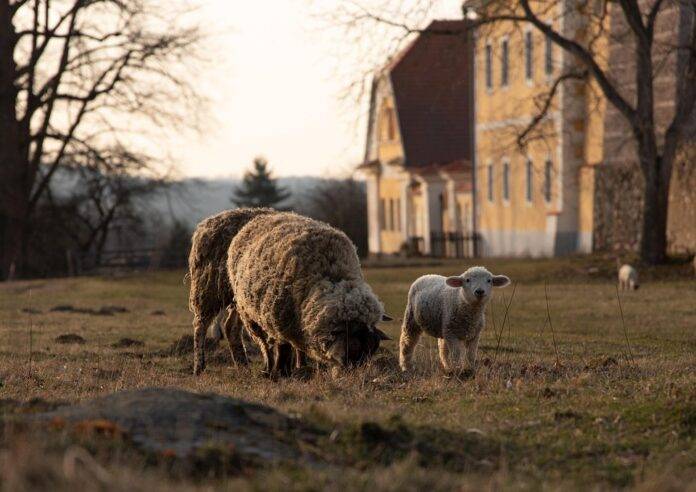Introduction
Climate change is one of the most pressing challenges facing agriculture today, and sheep farming is no exception. As the global climate continues to shift, the impacts on sheep farming are becoming increasingly evident. This report will highlight the top 10 climate change impacts on sheep farming, examining specific data, financial implications, volumes, and relevant examples to provide a comprehensive overview.
1. Altered Weather Patterns
One of the most significant impacts of climate change on sheep farming is the alteration of weather patterns. Increased frequency of extreme weather events, such as droughts and floods, can disrupt grazing patterns and impact sheep health. For instance, the Australian sheep industry, which produces approximately 30% of the world’s wool, has faced severe droughts in recent years, leading to significant reductions in wool production and increased feed costs. In 2019 alone, the Australian sheep industry reported a decrease in wool production by over 10%, which translated to a financial loss of approximately AUD 1 billion.
2. Changes in Pasture Quality and Availability
Climate change can lead to changes in pasture quality and availability, directly affecting sheep nutrition and productivity. Warmer temperatures and elevated carbon dioxide levels can enhance the growth of some grass species while diminishing others. A study in New Zealand revealed that under climate change scenarios, the quality of pasture is expected to decline, resulting in reduced sheep weight gain by up to 15%. This decline can lead to lower meat yields and reduced income for farmers.
3. Increased Livestock Disease and Parasite Pressure
Rising temperatures and shifting precipitation patterns create favorable conditions for various livestock diseases and parasites. For example, warmer climates may lead to an increase in the prevalence of gastrointestinal parasites, such as nematodes, which can significantly affect sheep health. The cost of managing parasitic infections can be substantial, with sheep farmers in the United States spending an estimated USD 1 billion annually on veterinary care and treatments. In severe cases, increased parasite loads can lead to higher mortality rates among flocks.
4. Water Scarcity
Water scarcity is becoming an increasingly critical issue for sheep farming, particularly in arid and semi-arid regions. Changing rainfall patterns can lead to reduced water availability for sheep, impacting their health and productivity. In regions like the Sahel in Africa, sheep farmers have reported a reduction in water sources by up to 40% over the past two decades. This scarcity not only affects animal welfare but also leads to increased costs for supplementary feeding and watering, which can strain farmers’ finances.
5. Feed Supply Disruptions
Climate change can disrupt feed supply chains, affecting the availability and prices of feed ingredients. The increased frequency of extreme weather events can damage crops that are essential for sheep feed, such as alfalfa and clover. For instance, the 2020 wildfires in the western United States destroyed thousands of acres of forage, leading to a spike in feed prices by 25% within months. This disruption can substantially impact the profitability of sheep farming operations.
6. Global Market Price Fluctuations
The interconnectedness of global agricultural markets means that climate change impacts in one region can affect prices worldwide. For instance, if a major sheep-producing country like Australia faces adverse weather conditions, it can lead to reduced meat and wool exports, causing prices to rise globally. In 2021, Australian lamb prices surged by 20% due to supply shortages caused by drought, highlighting how local climatic conditions can have far-reaching economic consequences.
7. Changes in Breeding Programs
As climate conditions evolve, sheep farmers may need to adapt their breeding programs to enhance resilience against climate-related challenges. This may involve selecting for traits such as heat tolerance or disease resistance. Research indicates that incorporating these traits into breeding programs can take several generations and require significant investment in genetic research and technology. Farmers may need to allocate substantial financial resources to develop and implement these new breeding strategies effectively.
8. Impact on Wool Production
Wool production is highly sensitive to climate change, particularly concerning temperature and humidity. Higher temperatures can lead to decreased fleece quality and quantity, impacting the wool market. In 2020, it was reported that wool quality declined by up to 15% in some regions due to extreme heat, leading to a loss of revenue for farmers. The global wool market, valued at approximately USD 3 billion, could face significant disruptions if these trends continue.
9. Shifts in Sheep Distribution
Climate change may force sheep farmers to alter their production locations as certain areas become less suitable for grazing. As temperatures rise, some traditional sheep farming regions may become unviable, pushing farmers to relocate to cooler areas. This shift can create challenges, including increased competition for land and resources, potential regulatory hurdles, and the need for significant capital investment in infrastructure.
10. Regulatory and Policy Changes
Governments worldwide are increasingly recognizing the need for climate action, leading to new regulations and policies impacting sheep farming. Farmers may face stricter emissions targets, land use regulations, and conservation requirements. Compliance with these regulations can incur additional costs, requiring farmers to invest in sustainable practices and technologies. Failure to adapt to these changes may result in financial penalties and loss of market access.
Conclusion
The impacts of climate change on sheep farming are multifaceted and significant. From altered weather patterns and increased disease pressures to disruptions in feed supply and regulatory changes, the challenges facing sheep farmers are considerable. To ensure survival and profitability in an increasingly unpredictable climate, farmers will need to adopt innovative strategies, invest in resilience-building practices, and stay informed about ongoing climate developments. As the global demand for sheep products continues to grow, addressing these climate-related challenges will be critical for the future of the industry.
[Read More: Global Sheep Industry Report 2025: Market Trends & Forecasts]




